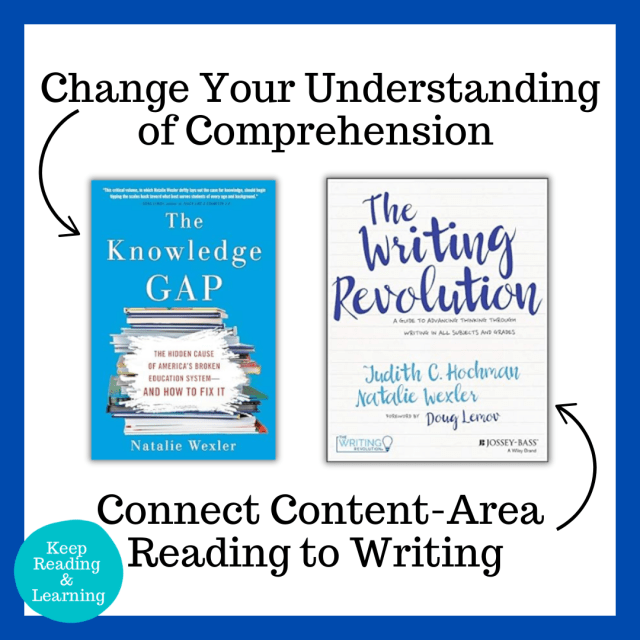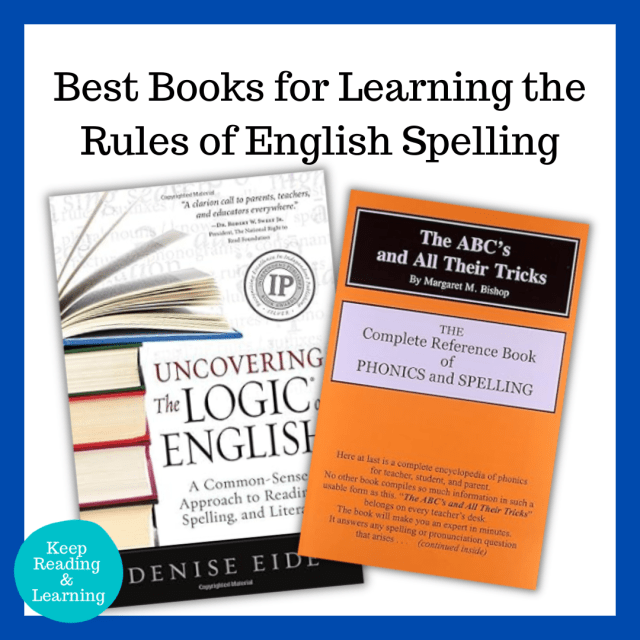This month, I’m sharing a list of my favorite science of reading books. Around 2012, I dove into topics related to structured literacy before I had even heard that phrase. I began my journey by taking a deep dive into dyslexia and then expanded my learning to broader topics, like best practices for teaching reading to typically developing learners. Over the years, I have returned to a small number of books again and again when I need to understand a student’s learning profile, help make an eligibility decision, or improve my teaching strategies.
This list does not encompass all aspects of the science of reading. Admittedly, I do want to learn more about vocabulary, comprehension, and morphology so you’ll see fewer books on those topics. However, all of the books you’re about to learn about are books that I personally own. They’re highlighted and bookmarked and well-loved, and I think you’ll love them, too!
This post contains Amazon affiliate links. I may earn a small commission if you purchase through my links. I’m a full-time teacher, just like you, and I appreciate your support! 🙂
How Your Brain Learns to Read by Denise Eide
I had the good fortune of winning this book through a Logic of English giveaway on Instagram. What makes it so special is that it’s not just for kids—it’s a gem for both children and adults alike. With colorful illustrations and straightforward explanations, it’s perfect for sparking curiosity in young minds about the science behind learning to read. At the same time, it offers a deeper dive into these concepts for parents, making it perfect for the whole family– or the whole classroom!
There are few science of reading books designed for children, and this one is a winner! I interviewed some kids to ask for their thoughts on the book. Jack, a fourth grader, shared that he likes how the book shows the parts of the brain involved in reading. He also said, “Mooom, don’t put me in your blog!”
View How Your Brain Learns to Read on Amazon.
Essentials of Assessing, Preventing, and Overcoming Reading Difficulties by David A. Kilpatrick
Out of all the science of reading books on my list, Essentials of Assessing, Preventing, and Overcoming Reading Difficulties is everything if you’re a special education teacher who wants to learn more about reading. In this book, I learned that nearly 80% of children diagnosed with an LD and in special education have reading difficulties. I have long said that special education teachers (of a certain age, at least) graduate college as jack-of-all-trades with broad but not deep knowledge of the various disability categories. Once we choose a job, we must delve into more specific topics to effectively support our students. I chose to begin as a traditional resource room teacher, providing pull-out reading and math services for students who spent the majority of their day in the general education classroom. That meant that I needed to learn about reading and math disabilities to do my job effectively. Kilpatrick’s Essentials was one of the first science of reading books I read in my journey to know better, do better. Topics covered include:
- the gap between research and practice that prevents schools from using research-based practices
- what’s wrong with common approaches to teaching reading, like three cueing methods
- how to assess reading skills
- how to prevent reading problems in young children and early readers
- how to minimize reading difficulties in older students
- guidelines for identifying reading disabilities
View Kilpatrick’s Essentials on Amazon.

Essentials of Dyslexia Assessment and Intervention by Nancy Mather and Barbara Wendling
This book provides a thorough study of dyslexia. It will help you recognize, assess, and provide intervention for this most common of the Specific Learning Disabilities. It was required reading for the professional development course, Understanding Dyslexia. I took this course early on in my shift to following structured literacy practices. I remember devouring this book and recognizing my students in various sections. It made me realize that my instruction needed a major overhaul and motivated me to learn more for the sake of my students and their futures. Click here for the newer blog about SoR courses that offer college credits, which includes this course.
View Wendling & Mathers’ Essentials on Amazon.
Equipped For Reading Success: A Comprehensive, Step-By-Step Program for Developing Phonemic Awareness and Fluent Word Recognition by David A. Kilpatrick
If Kilpatrick’s Essentials (above) is too dense of a read for you, consider Equipped for Reading Success instead. Even the names of the book’s sections assure you that you can digest the contents of this book: Part I is titled What Needs to Be Done and Part II is titled How to Do It. When people ask me where they can learn more about orthographic mapping, this is the book I recommend.
Kilpatrick also describes four types of reading difficulties: dyslexia, hyperlexia, combined/mixed type, and compensators. The chapter on compensators was of particular interest to me. When I read this book, I was working in a school that used a three-cueing method for tier 2 intervention. I recognized that many of the students I evaluated who had been receiving instruction in the three-cueing program fit the profile of compensators: they had learned ineffective reading strategies early on and then really began to struggle in late second or early third grade. Equipped for Reading Success is a must-read if you often work with students who need remediation after instruction from a balanced literacy curriculum. You can also read more about compensators here.
View Equipped for Reading Success on Amazon.

Speech to Print: Language Essentials for Teachers by Louisa Moats
When I was studying for the KPEERI (Knowledge and Practice Examination for Effective Reading Instruction), Speech to Print was highly recommended as a study guide. The KPEERI is intended to measure “an educator’s knowledge of the principles and practices of Structured Literacy,” so if you want to become knowledgeable on the principles and practices of structured literacy, get your hands on this book!
View Speech to Print on Amazon.
The Writing Revolution: A Guide to Advancing Thinking Through Writing in All Subjects and Grades by Judith C. Hochman and Natalie Wexler
Although this is a list of science of reading books, we can’t forget about writing! If your students struggle to compose complete sentences or make frequent grammatical errors and you’re not sure where to begin, The Writing Revolution is a must-read. From the first chapter alone, I took pages and pages of notes!
Hochman and Wexler explain that students who struggle with sentence writing should participate in activities that help them develop their understanding of what a complete sentence is. Four activities the authors recommend are:
- Distinguishing between sentences and fragments
- Turning fragments into complete sentences
- Locating fragments that have been embedded in text
- Unscrambling sentences (learn more about using scrambled sentences here)
In The Writing Revolution, you’ll read lots of details about specific ways to incorporate each of these activities into your existing curriculum, plus a plethora of strategies for more complex aspects of writing and for older students. Bonus: If you’re making the shift to a knowledge-building curriculum like CKLA or Wit and Wisdom, The Writing Revolution will help you weave writing into the content your students are learning.
View The Writing Revolution on Amazon.

The Knowledge Gap: The Hidden Cause of America’s Broken Education System–and How to Fix it by Natalie Wexler
This book turned everything I knew about reading comprehension upside down. As the author, Natalie Wexler, puts it: “Most teachers don’t question the idea of trying to teach reading comprehension as a set of discrete skills.” Wexler will convince you to step away from teaching a set of skills and step towards building students’ knowledge and vocabulary. When students have a wealth of knowledge and a well-developed vocabulary, they are better equipped to meet those Common Core standards, like identify the main topic and retell key details of a text (CCSS.ELA-LITERACY.RI.1.2) or explain the relationships or interactions between two or more individuals, events, ideas, or concepts (CCSS.ELA-LITERACY.RI.5.3)
If your school recently adopted a knowledge-building curriculum like CKLA or Wit & Wisdom and you’re feeling overwhelmed by the in-depth topics your students are exploring, The Knowledge Gap will reassure you that a knowledge-building curriculum will move your students in the right direction.
View The Knowledge Gap on Amazon.
Uncovering the Logic of English: A Common-Sense Approach to Reading, Spelling, and Literacy by Denise Eide
Discover the logic of English spelling with this easy-to-follow guide. You’ll be pleasantly surprised as you realize that English spelling patterns aren’t as perplexing as they seem. In this book, Eide reveals the truth about the literacy crisis and highlights the crucial role of teaching English spelling rules in improving literacy rates. You’ll learn the 75 phonograms (letters representing sounds) and 31 spelling rules that demystify English spelling. From understanding the nine reasons for silent e to grasping why c and g soften in certain words like ice and huge, Eide covers it all. Additionally, she emphasizes the importance of integrating spelling and vocabulary, advocating for explicit teaching of concepts such as roots and affixes. This is a book you will mark up and refer to again and again!
View Uncovering the Logic of English on Amazon.

The ABC’s and All Their Tricks by Margaret Bishop
If you already read Uncovering the Logic of English and you’re hungry for more details, The ABC’s and All Their Tricks is a perfect next read. It’s not subtitled “The Complete Reference Book of Phonics and Spelling” for nothing!
View The ABC’s and All Their Tricks on Amazon.
Why Do English Learners Struggle with Reading? by Janette K. Klingner, John J. Hoover, and Leonard Baca
I love to tell this story: In my last position, I frequently completed academic evaluations on students whose first language was Spanish. I often struggled to determine if their weaknesses in reading were just a natural consequence of the language acquisition process or if a true learning disability was present. I emailed the University of La Verne and asked if they could create a professional development course on the topic. A few months later, I received an email stating that the course was available! Why Do English Learners Struggle with Reading? was one of the required texts for the course, and I frequently referred to it during the evaluation process for many students. Learn more about the course in my newer blog.

The authors cover topics ranging from the Multi-Tiered System of Supports (MTSS) as it relates to English Learners (ELs), misconceptions about the second language acquisition process, specific aspects of learning to read that ELs may struggle with, special education assessments of ELs, and how to make data-driven decisions to determine the next steps for ELs who are struggling with reading.
View Why Do English Learners Struggle with Reading? on Amazon.
And there you have it—my top ten favorite science of reading books!
These books are like trusted friends, guiding us through the world of structured literacy. Whether you’re a seasoned educator, a curious parent, or newly passionate about understanding how we learn to read, these books offer something for everyone. So grab a cozy spot and a cup of tea and dive into these pages! Happy reading!



